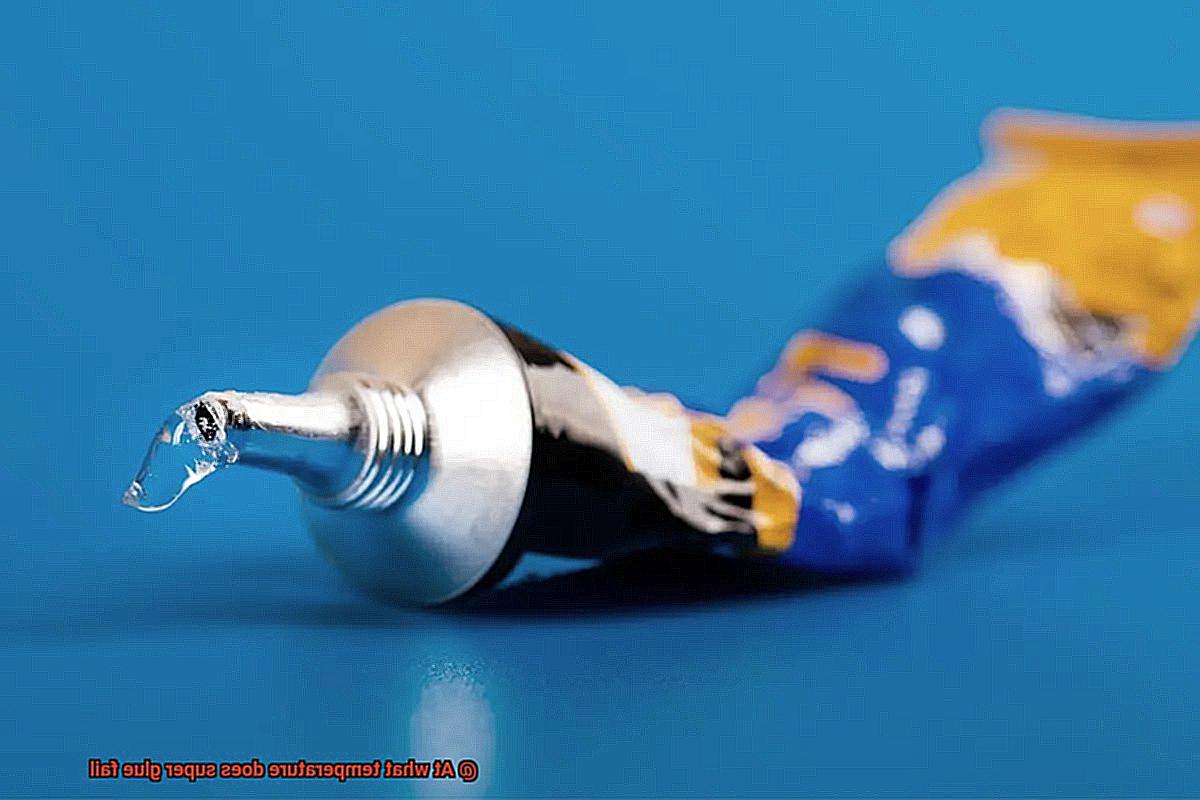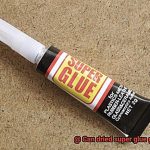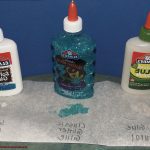Super glue, that trusty sidekick in our everyday mishaps and DIY adventures, has saved us from countless sticky situations. But have you ever wondered what happens when this adhesive superhero encounters a fiery foe? What temperature is too hot for it to handle?
Prepare to embark on an eye-opening journey into the hidden world of super glue’s vulnerabilities. Join us as we unravel the secrets behind its chemical wizardry and explore the fascinating interplay between temperature and adhesion. Get ready to witness firsthand how extreme heat can push this adhesive marvel to its limits.
In this blog post, we’ll dive headfirst into the science behind super glue’s resilience, examining its composition and physical properties. We’ll shine a light on the moment when it succumbs to scorching temperatures, leaving us wondering if there’s any limit to its mighty grip.
So fasten your seatbelts and get ready for an adventure that will challenge your preconceived notions about super glue’s invincibility. Together, we’ll expose the breaking point where this everyday hero meets its match in the form of blistering heat.
Are you ready to uncover the truth about super glue’s weakness? Let’s jump right in and discover at what temperature this adhesive wonder fails to hold its ground.
Temperature Tolerance of Super Glue
Contents
- 1 Temperature Tolerance of Super Glue
- 2 Factors That Affect the Failure Temperature of Super Glue
- 3 The Different Types of Materials and Their Respective Failure Temperatures
- 4 How Extreme Temperature Fluctuations Can Impact Super Glue Performance
- 5 High Heat Applications and Adhesives Suitable for These Conditions
- 6 Preparing Surfaces for Bonding with Super Glue
- 7 Applying the Correct Amount of Super Glue
- 8 Curing Time and Its Impact on Bond Strength and Longevity
- 9 Conclusion
The temperature tolerance of super glue is a crucial consideration when using this popular adhesive. Super glue, also known as cyanoacrylate adhesive, is widely used to bond various materials together. However, extreme temperatures can greatly impact its performance.
Most super glues are designed to function within a specific temperature range. Going beyond this range can cause the glue to fail. The exact temperature at which super glue fails can vary depending on the brand and formulation of the adhesive.
In general, most super glues have a temperature tolerance range of -40 degrees Fahrenheit (-40 degrees Celsius) to approximately 180 degrees Fahrenheit (82 degrees Celsius). When temperatures drop below the lower limit of this range, super glue may become brittle and lose its adhesive properties. Conversely, when temperatures exceed the upper limit, super glue may become too soft or even melt, resulting in weakened bonds or failure to bond altogether.
It’s important to note that these temperature limits are approximate and can vary between different brands and formulations of super glue. Additionally, factors such as humidity, pressure, and the specific materials being bonded can influence the temperature tolerance.
For example, certain types of super glue may exhibit better resistance to high temperatures when used on materials like metal or glass compared to others like plastic or wood.
When working with super glue in environments with extreme temperatures, it is advisable to choose a high-temperature resistant variant or consider alternative adhesives specifically designed for those conditions.
Factors That Affect the Failure Temperature of Super Glue
The failure temperature of super glue is influenced by several key factors. Understanding these factors is crucial for selecting the right adhesive for specific applications. Let’s delve into the science behind this sticky situation.
First and foremost, the composition of super glue plays a significant role in its failure temperature. Cyanoacrylate adhesive, commonly known as super glue, is comprised of cyanoacrylate monomers. The length and structure of these monomers can vary between different brands, resulting in variations in heat resistance. To ensure optimal performance under high temperatures, it is important to choose a super glue with a high-temperature resistant formulation.
Next on our list is the bonding surface. The material being bonded can greatly impact the failure temperature of super glue. Materials with higher melting points, such as glass or metal, can withstand higher temperatures before the adhesive bond weakens. However, plastics or rubber with lower melting points can fail under lower temperatures. It is crucial to consider the melting point of the material when selecting a super glue for a specific application.
The technique used to apply super glue also plays a role in its failure temperature. Proper surface preparation, including cleaning and roughening the bonding surfaces, enhances adhesion and improves heat resistance. Additionally, applying an adequate amount of glue and allowing sufficient curing time before subjecting it to high temperatures is essential for maintaining a strong bond.
Exposure time is another crucial factor. Prolonged exposure to high temperatures can gradually weaken the adhesive bond, causing it to fail at lower temperatures over time. It is important to consider both the maximum temperature and the duration of exposure when assessing the suitability of super glue for a particular application.
Environmental conditions also come into play. High humidity levels or exposure to water can accelerate the degradation process of cyanoacrylate adhesives, reducing their resistance to heat. Therefore, if you plan to use super glue in a damp environment, it may be wise to explore alternative options.
Lastly, thermal expansion is a factor that should not be overlooked. As temperatures rise or fall, materials expand and contract. Super glue has limits when it comes to accommodating these changes, which can result in bond failure at higher temperatures. To ensure a stronger adhesive bond, it is essential to consider the coefficient of thermal expansion of the materials being bonded.
By understanding these factors, adhesive enthusiasts can make informed decisions about the appropriate use of super glue in various applications. Remember to follow the manufacturer’s instructions and recommendations regarding temperature limits for specific products.
The Different Types of Materials and Their Respective Failure Temperatures
It is important to understand that this adhesive may not hold up well under extreme temperatures. In order to use super glue effectively, it is crucial to have knowledge about the different types of materials and their respective failure temperatures. Let’s delve into the world of materials and explore how they interact with super glue under various temperature conditions.
Plastic:
Plastic materials are commonly bonded using super glue due to its versatility and quick-drying properties. However, it is vital to consider the failure temperature of super glue on plastic surfaces. Most plastics have a failure temperature range between 200°F to 300°F. Beyond this range, the adhesive strength of super glue may diminish, resulting in potential bond failure. Therefore, caution must be exercised when using super glue on plastic items that are exposed to high temperatures.
Metal:
Super glue is also a popular choice for bonding metal surfaces. However, different metals possess varying melting points, which can impact the performance of super glue. For example, aluminum, a lightweight metal commonly used in aerospace applications, has a relatively low melting point of around 1200°F.
Conversely, steel, a sturdy metal found in construction and engineering projects, boasts a much higher melting point of approximately 2500°F. Super glue may not be able to withstand such extreme heat and can fail under these conditions.
Glass:
Glass surfaces can be effectively bonded using super glue as long as they are not subjected to extreme temperatures. Glass has an impressively high melting point of around 2600°F.
However, sudden and drastic temperature changes can cause glass to crack or shatter due to thermal expansion or contraction. Consequently, if super glue is applied to glass and then exposed to rapid temperature fluctuations, the bond may fail due to the stress placed on the glass.
Super Glue Types:
It is crucial to consider the specific type of super glue being used when assessing its failure temperature. Different brands and formulations of super glue exhibit varying properties and resistance to heat.

Some specialized high-temperature resistant super glues are available in the market, designed specifically to withstand higher temperatures compared to regular super glue. These high-temperature resistant variants offer a stronger bond even in elevated temperature environments, making them suitable for applications where heat resistance is paramount.
How Extreme Temperature Fluctuations Can Impact Super Glue Performance
Super glue, also known as cyanoacrylate adhesive, is a beloved adhesive for its fast bonding and strong holding properties. However, it is not immune to the effects of extreme temperature fluctuations. Understanding how these fluctuations can impact super glue performance is crucial for DIY enthusiasts and frequent users of this adhesive.
Let’s start with extreme heat. When exposed to high temperatures, super glue can become weaker and more prone to breaking apart. The heat causes the adhesive to soften, reducing its ability to hold materials together effectively. Imagine trying to repair a broken mug only to have the bond give way when you pour a hot beverage into it. Not ideal, right? Moreover, extreme heat can cause the adhesive to expand and lose its grip on the surface it was applied to, leading to bond failure.
On the other hand, extreme cold temperatures can also affect the performance of super glue. Cold temperatures can make the adhesive brittle and more susceptible to cracking or breaking under stress. So if you’re planning on fixing something in freezing weather, think twice before reaching for your trusty super glue. When exposed to freezing temperatures, the adhesive can become more rigid, making it less flexible and more likely to fail under pressure.
But it’s not just the extremes that matter. Rapid temperature changes can also impact the performance of super glue. The expansion and contraction that occurs during temperature fluctuations can put stress on the adhesive bond, leading to failure over time. So even if you’re not dealing with extremely hot or cold conditions, it’s important to be mindful of temperature variations.

Now, before you start panicking, remember that different types of super glue have different temperature tolerances. Some super glues are specifically designed to withstand extreme temperatures better than others. There are formulations available that are tailored for high-temperature applications, able to withstand temperatures up to 200 degrees Celsius or more. So if you know you’ll be working in extreme conditions, it might be worth investing in a specialized super glue that can handle the heat or cold.
High Heat Applications and Adhesives Suitable for These Conditions
Today, we embark on a journey into the captivating realm of high heat applications and the adhesives that triumph in these fiery conditions. While super glue may seem like the ultimate adhesive superhero, extreme temperatures demand reinforcements.
Let’s start by understanding why regular adhesives, like super glue, cannot endure the heat. High heat applications occur when temperatures exceed the typical operating range of adhesives, usually around 150 to 200 degrees Fahrenheit (65 to 95 degrees Celsius). In these scorching conditions, super glue weakens, loses stability, and succumbs to softening, brittleness, or complete breakdown. Not exactly the reliable adhesive you seek when everything depends on it, right?
So, what options do we have for these sizzling scenarios? Enter our first hero: epoxy adhesive. Renowned for its remarkable heat resistance, epoxy can withstand temperatures up to 300 degrees Fahrenheit (150 degrees Celsius) or even higher in some instances. This superhero stands tall against the heat without breaking a sweat.
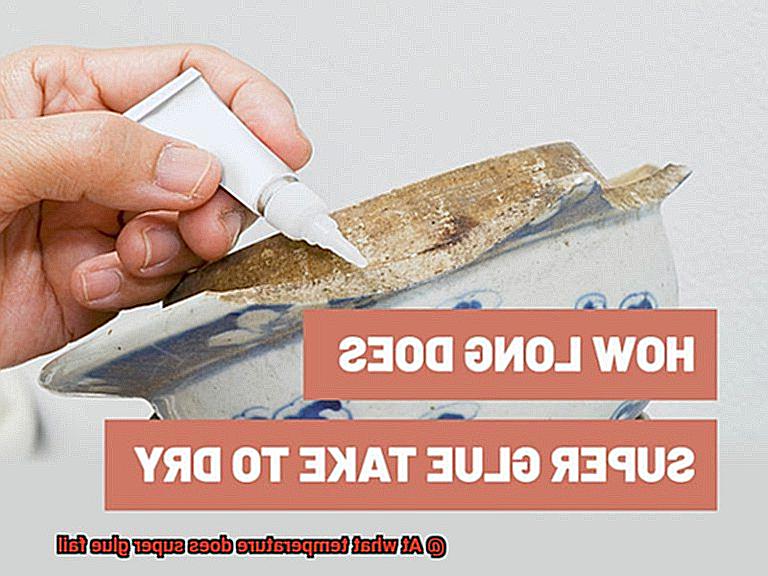
Next on our roster are silicone adhesives. These versatile wonders boast an expansive temperature range and can endure temperatures up to 500 degrees Fahrenheit (260 degrees Celsius) or more, depending on the specific product. Talk about hot stuff.
When selecting an adhesive for high heat applications, it is vital to consider both the maximum temperature and the duration of exposure. Some adhesives may endure short-term exposure to high temperatures but falter under extended periods. Ensure you scrutinize those specifications before committing to an adhesive.
In industries such as automotive, aerospace, electronics, and industrial manufacturing, high heat applications are commonplace. Adhesives play a pivotal role in bonding heat-sensitive components, securing insulation materials, sealing joints and seams, and attaching parts exposed to elevated temperatures. These industries rely on adhesives that can withstand the heat and execute their duties flawlessly.

Preparing Surfaces for Bonding with Super Glue
Super glue is a fascinating adhesive that can create strong and long-lasting bonds. But did you know that properly preparing surfaces is the key to unlocking its full potential? Let’s dive into the exciting world of surface preparation for bonding with super glue.
First, let’s talk cleanliness. This is a crucial step that can’t be overlooked. Before applying super glue, make sure to clean the surfaces thoroughly. Dirt, dust, oil, or grease can all interfere with the bonding process. Grab a mild detergent or a suitable solvent and give those surfaces a good scrub. Rinse them off and let them dry completely. We want those surfaces squeaky clean.
Next up, roughen things up a bit. Smooth surfaces might look sleek, but they don’t provide much grip for our mighty super glue. That’s why it’s important to roughen them up a bit. Grab some fine-grit sandpaper or an abrasive pad and gently sand the surfaces. Be careful not to damage or scratch the material. Once you’re done, get rid of any dust or debris that might have been generated during the sanding process.
But wait, there’s more. Some materials require extra steps for proper surface preparation. Metals, for example, might need a primer or an etching solution to enhance adhesion. And plastics? They can benefit from a light flame treatment or the application of a plastic adhesive promoter. These additional steps ensure that our super glue bonds like crazy.
Now that your surfaces are clean and ready to go, let’s make sure they fit together perfectly. Test fit the parts or objects being bonded to ensure a snug and precise fit. This maximizes bond strength and prevents any misalignment issues. We want those surfaces to come together like puzzle pieces.
Before we wrap things up, let’s talk temperature and humidity. Super glue works best at room temperature, typically between 70-80°F (21-27°C). Extreme temperatures can affect its performance. So try to work in a controlled environment with moderate temperature and humidity levels for optimal results.
And there you have it. By following these steps and properly preparing the surfaces, you’ll ensure a strong and long-lasting bond when using super glue. Surface preparation is the secret ingredient that maximizes the adhesive’s effectiveness and guarantees a successful bonding experience.

Applying the Correct Amount of Super Glue
Well, you’ve come to the right place. Today, we’re going to delve into the art of applying the correct amount of super glue for successful bonding. Trust me, it’s not as simple as it sounds, but with a little guidance, you’ll be a pro in no time.
First things first, let’s talk about the importance of using the right amount of super glue. Using too little can result in a feeble bond that won’t hold up under pressure. On the other hand, using too much can create a sticky situation that’s hard to clean up. So, finding that sweet spot is paramount.
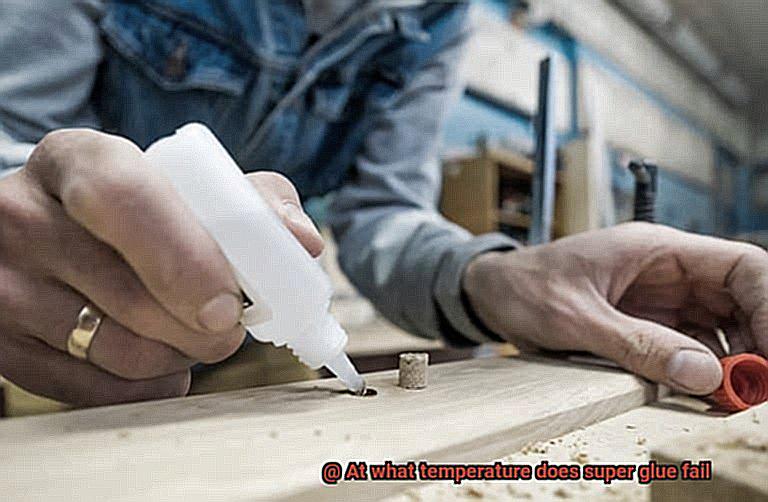
To start, make sure both surfaces are pristine and dry. Dust and moisture can interfere with the bonding process, so give them a thorough wipe down before you begin. Once your surfaces are prepped and ready, it’s time to unleash the power of super glue.
Retrieve your trusty bottle of super glue and gently squeeze it to release a thin line of adhesive. Aim for a thin and even layer that adequately covers both surfaces. Remember, less is more in this case. If you’re unsure about the amount, start with a small quantity and add more if needed.
Now comes the tricky part – avoiding excessive pressure. When uniting the surfaces, exercise caution and refrain from applying too much force. Excessive pressure can cause excess adhesive to ooze out and create a messy bond that’s arduous to clean up. So, take it slow and steady.
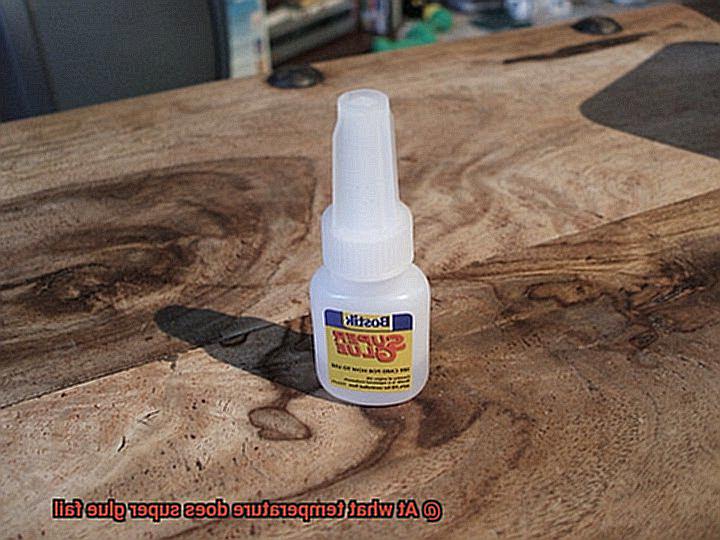
Once your surfaces are joined, exercise patience and allow the adhesive to cure and bond properly. Different types of super glue may have specific curing times, so consult the manufacturer’s guidelines for optimal results. Patience is key here.
If you desire an extra-strong bond, you can apply multiple thin layers of super glue. Just ensure that each layer has cured before adding the next one. But remember, excessive application can lead to longer curing times, so find that balance between strength and efficiency.
Curing Time and Its Impact on Bond Strength and Longevity
Let’s delve into the enigma of curing time. Picture this: you’ve just expertly glued two surfaces together, and anticipation bubbles within you to test the strength of your bond. But wait. Hasty impatience can spell disaster. Rushing the curing process weakens the bond, leaving you vulnerable to failure. Patience becomes your ally here, my friends. Give the adhesive time to forge robust molecular bonds that create a connection built to endure.
Now, let’s explore the impact of temperature. We all know extremes rarely bode well, and super glue is no exception. When it comes to frigid temperatures below freezing, think twice before reaching for that bottle of super glue. The icy air can impede or even halt proper curing, resulting in a feeble bond prone to crumbling under pressure. Brrr…far from ideal.
On the flip side, scorching heat can also be detrimental to your super glue endeavors. Excessive temperatures lead to premature curing, yielding weaker bonds that fail to withstand the test of time. Nobody desires such an outcome. Thus, safeguard your cherished adhesive by storing it in a cool and dry place, far removed from direct sunlight or any heat sources.
Remember, not all super glues are created equal. Certain specialized formulations defy temperature extremes without compromising bond strength. These exceptional heroes often find themselves in industries like automotive, aerospace, and electronics—realms where temperature variations are par for the course. If you tackle projects in these domains, ensure you choose the right glue for the job.
In essence, curing time and temperature form a dynamic duo essential to super glue success. Grant your adhesive the time it craves to fully cure, while remaining mindful of the temperature conditions. By striking this delicate balance, you’ll forge bonds sturdy, enduring, and destined to last.
Conclusion
Super glue, a popular adhesive known for its strength and versatility, is not invincible when it comes to extreme temperatures.
When exposed to high heat, super glue can lose its adhesive properties and fail to provide the strong bond it is renowned for. While there isn’t a specific temperature threshold at which super glue universally fails, it generally begins to weaken and deteriorate around 150 degrees Fahrenheit (65 degrees Celsius).
At this temperature, the chemical composition of the adhesive starts to break down, compromising its ability to stick effectively. As the temperature continues to rise, the glue becomes increasingly ineffective until it ultimately loses all bonding capability.
It’s important to note that different types of super glue may have varying tolerance levels to heat, so always refer to the manufacturer’s instructions for specific guidance.

